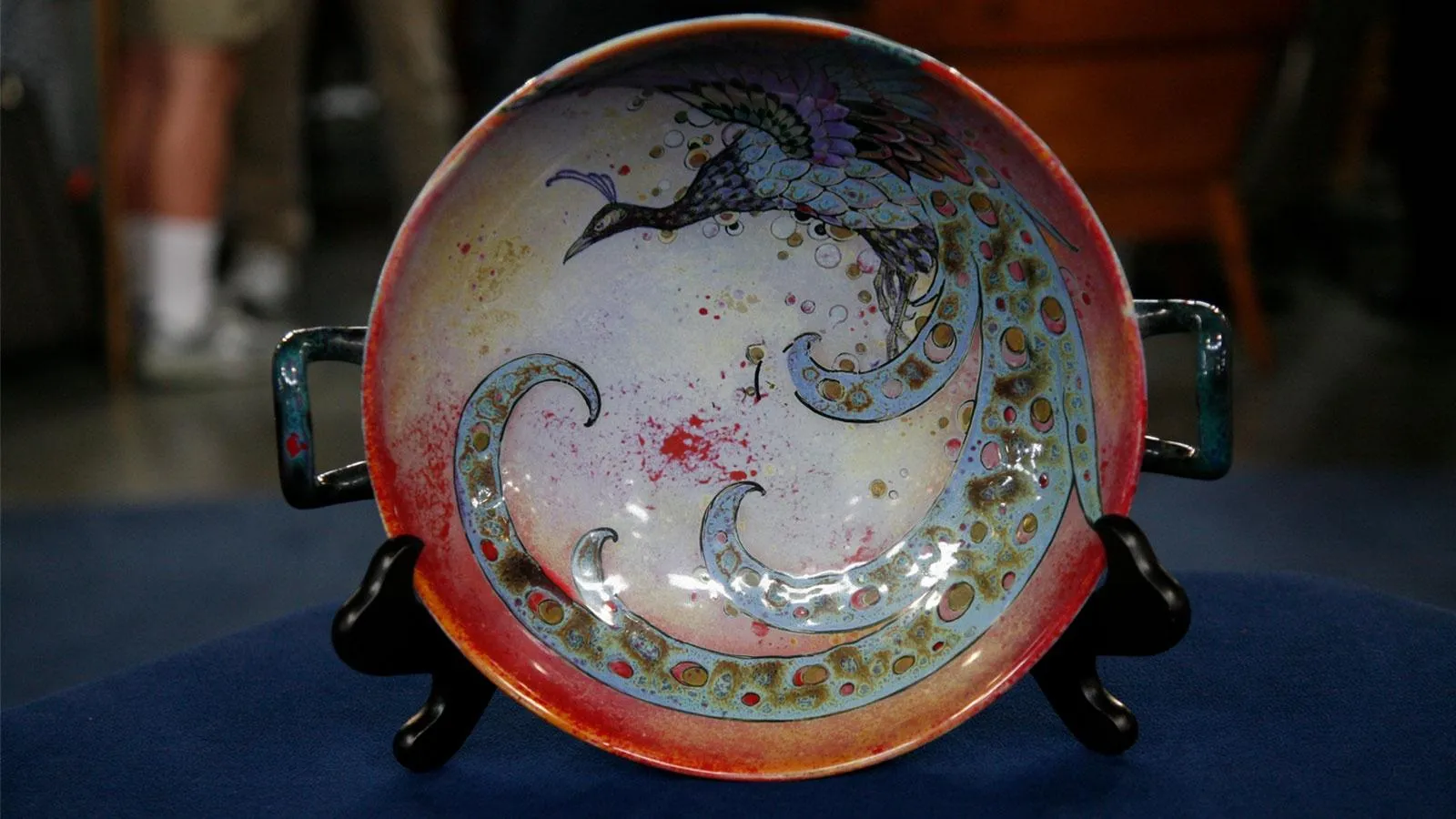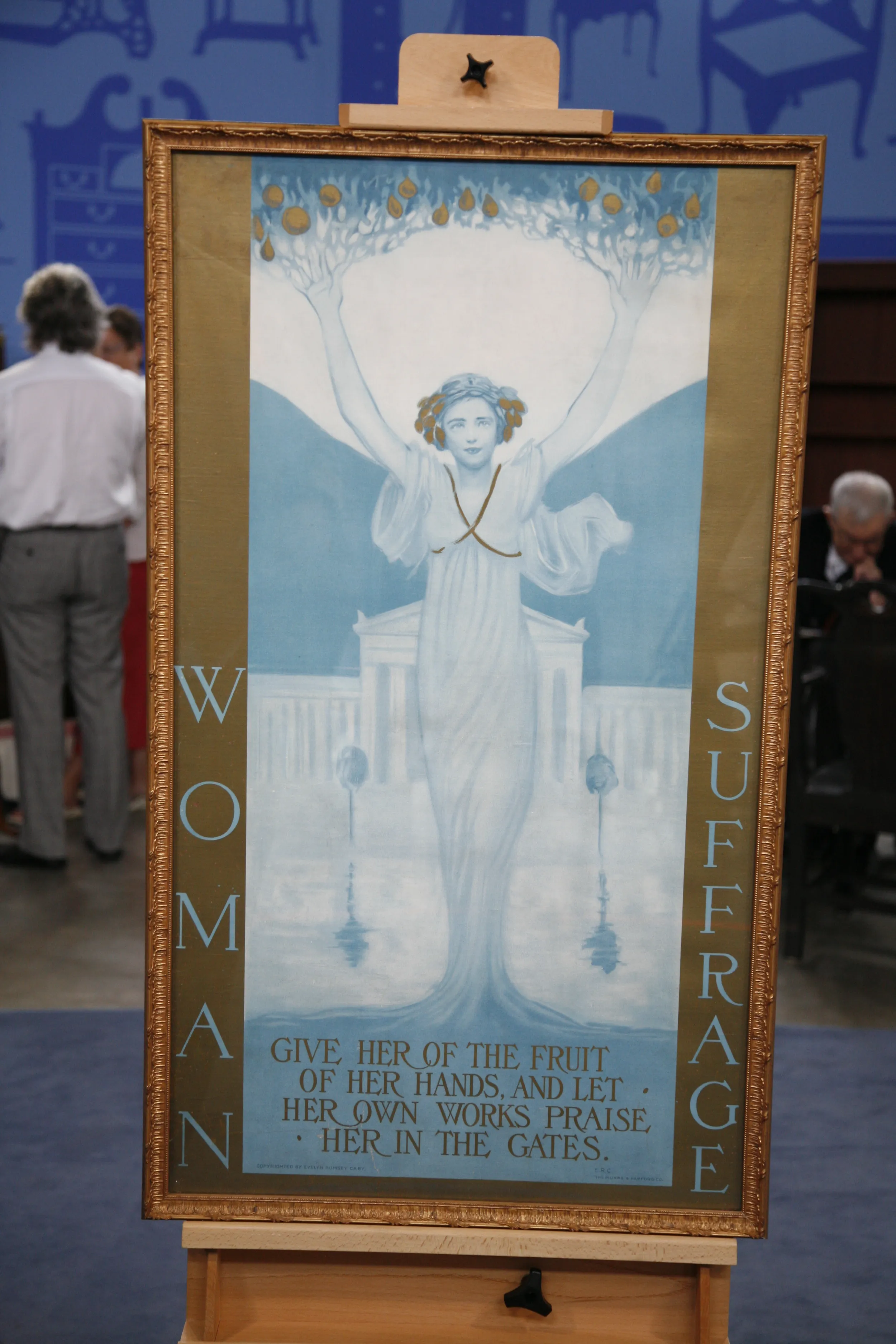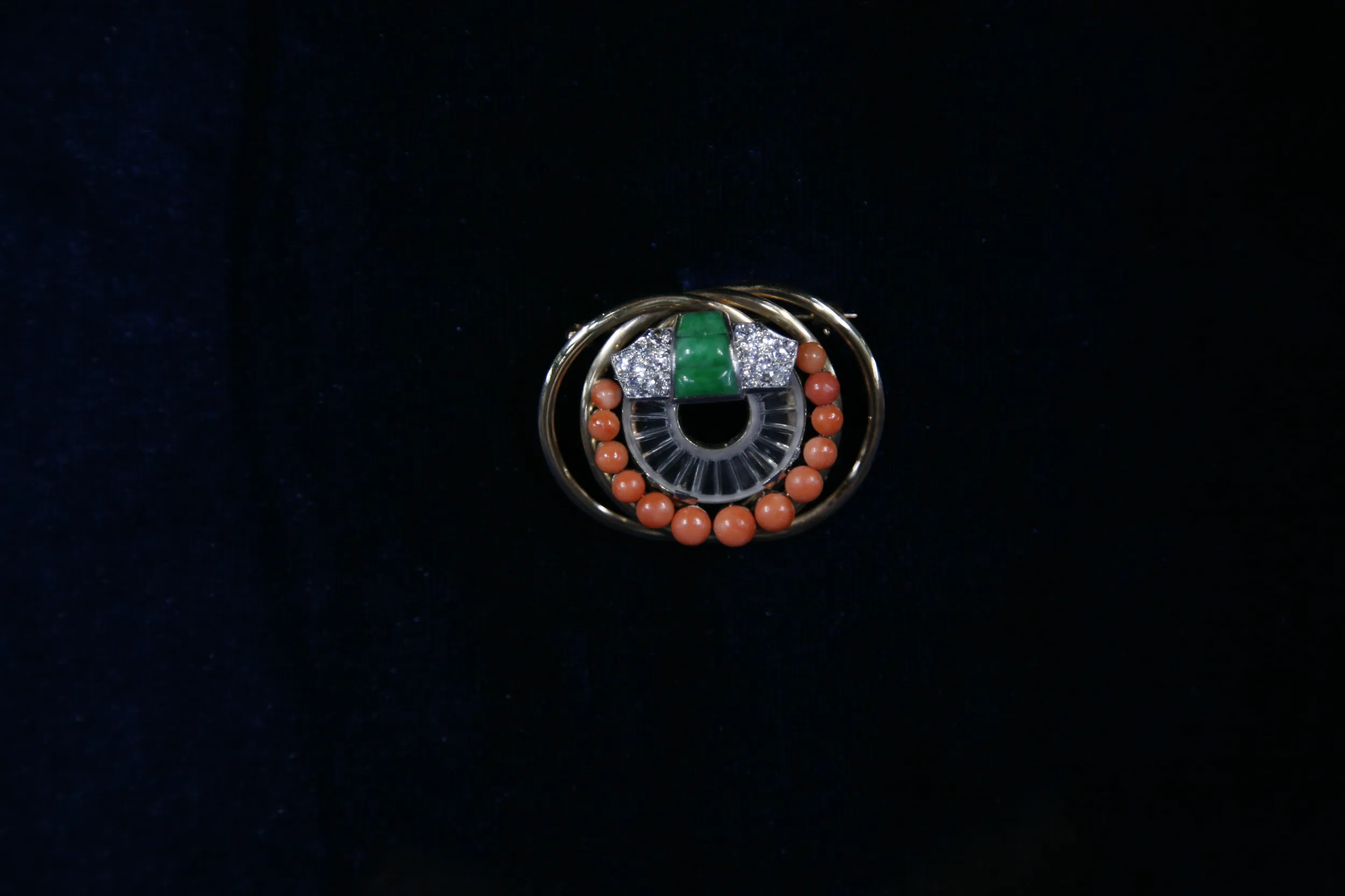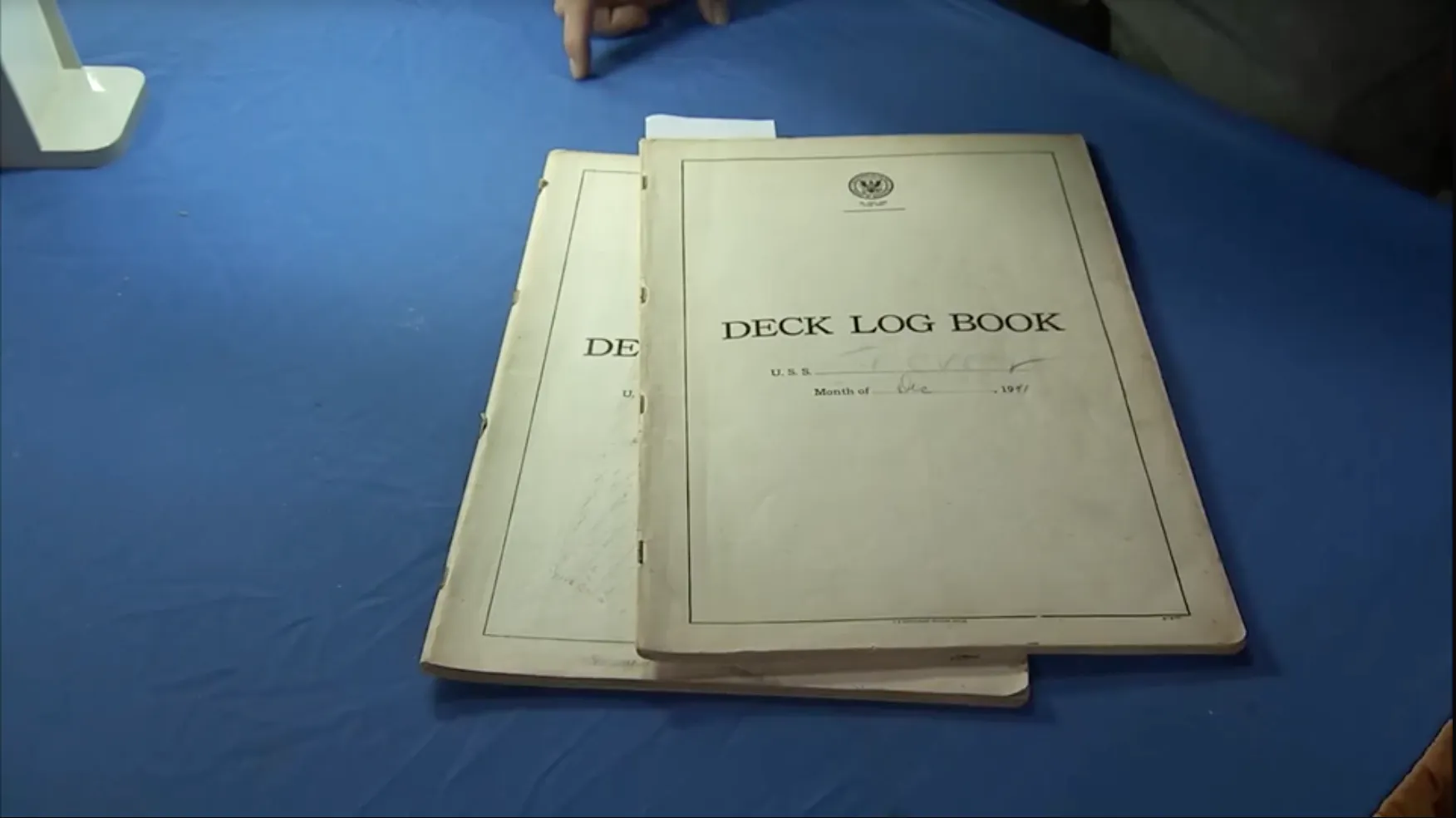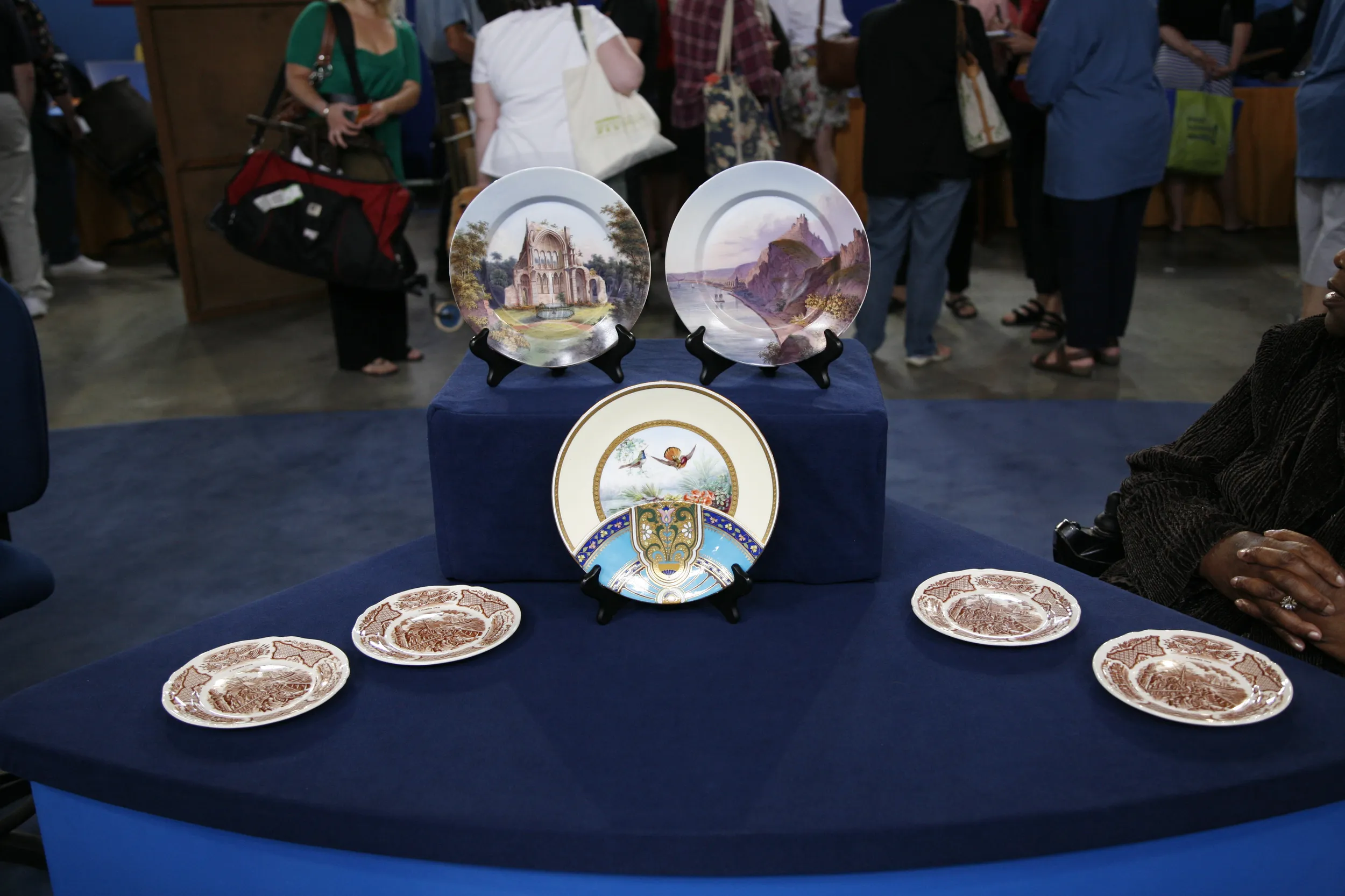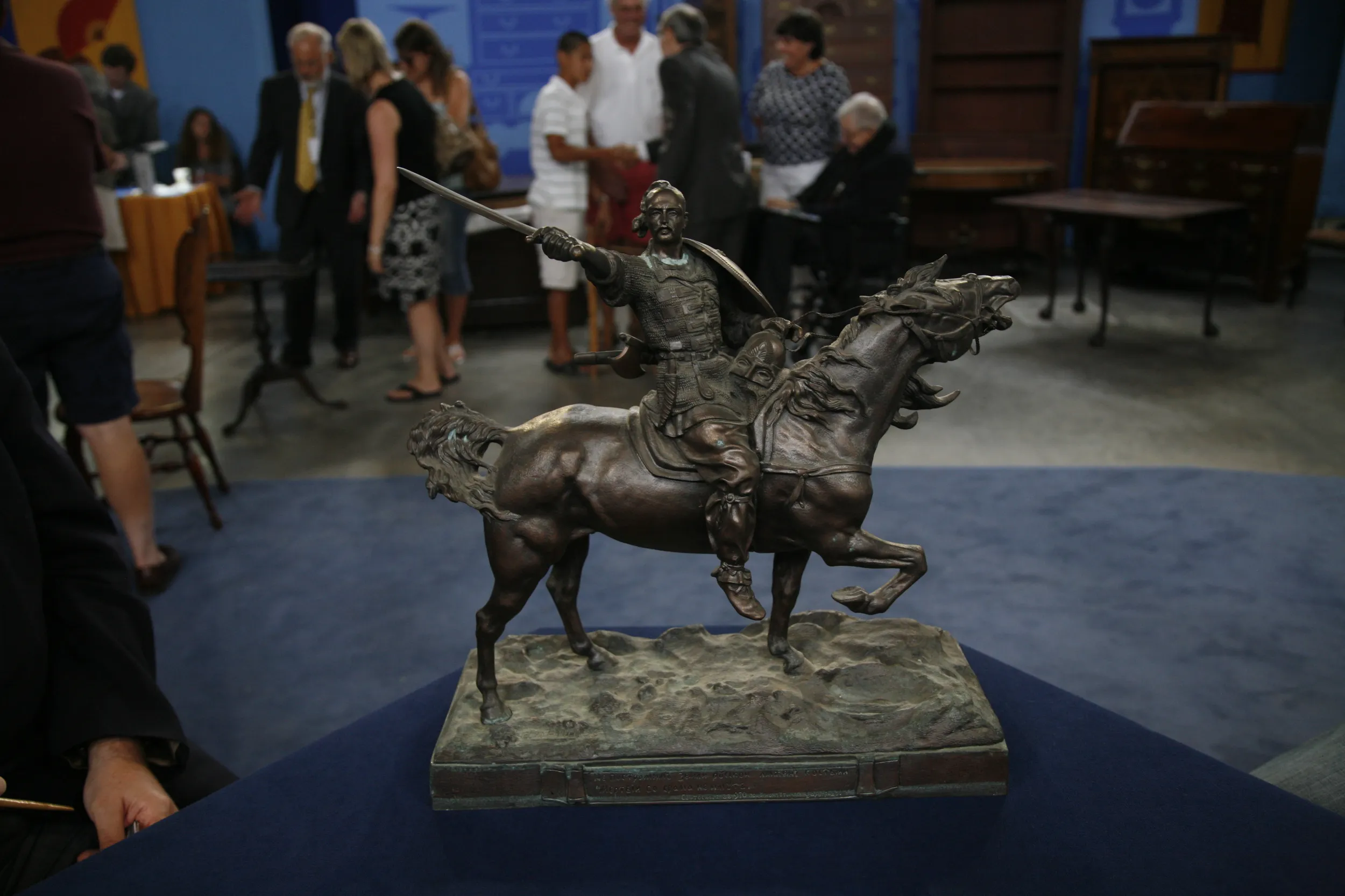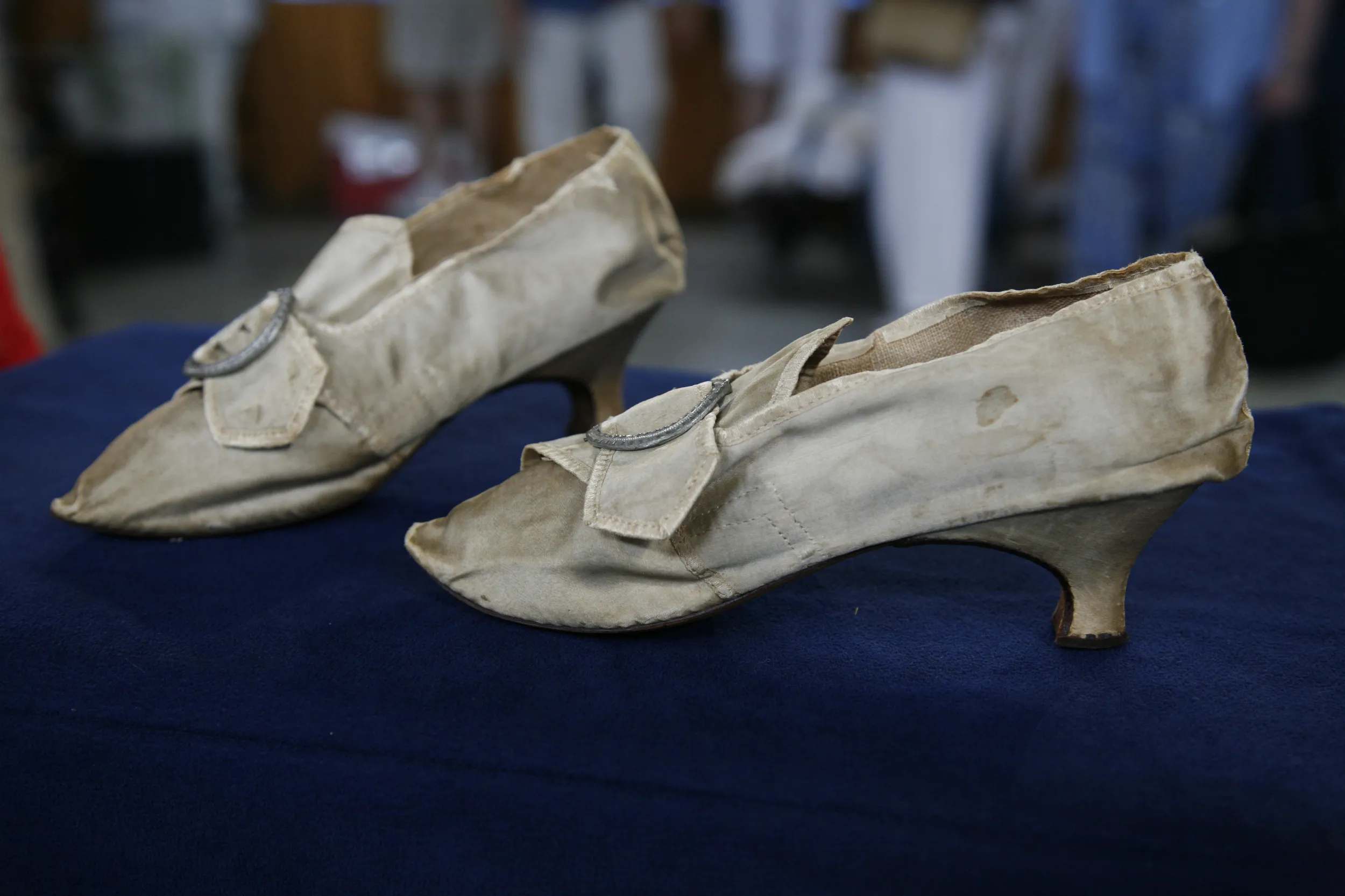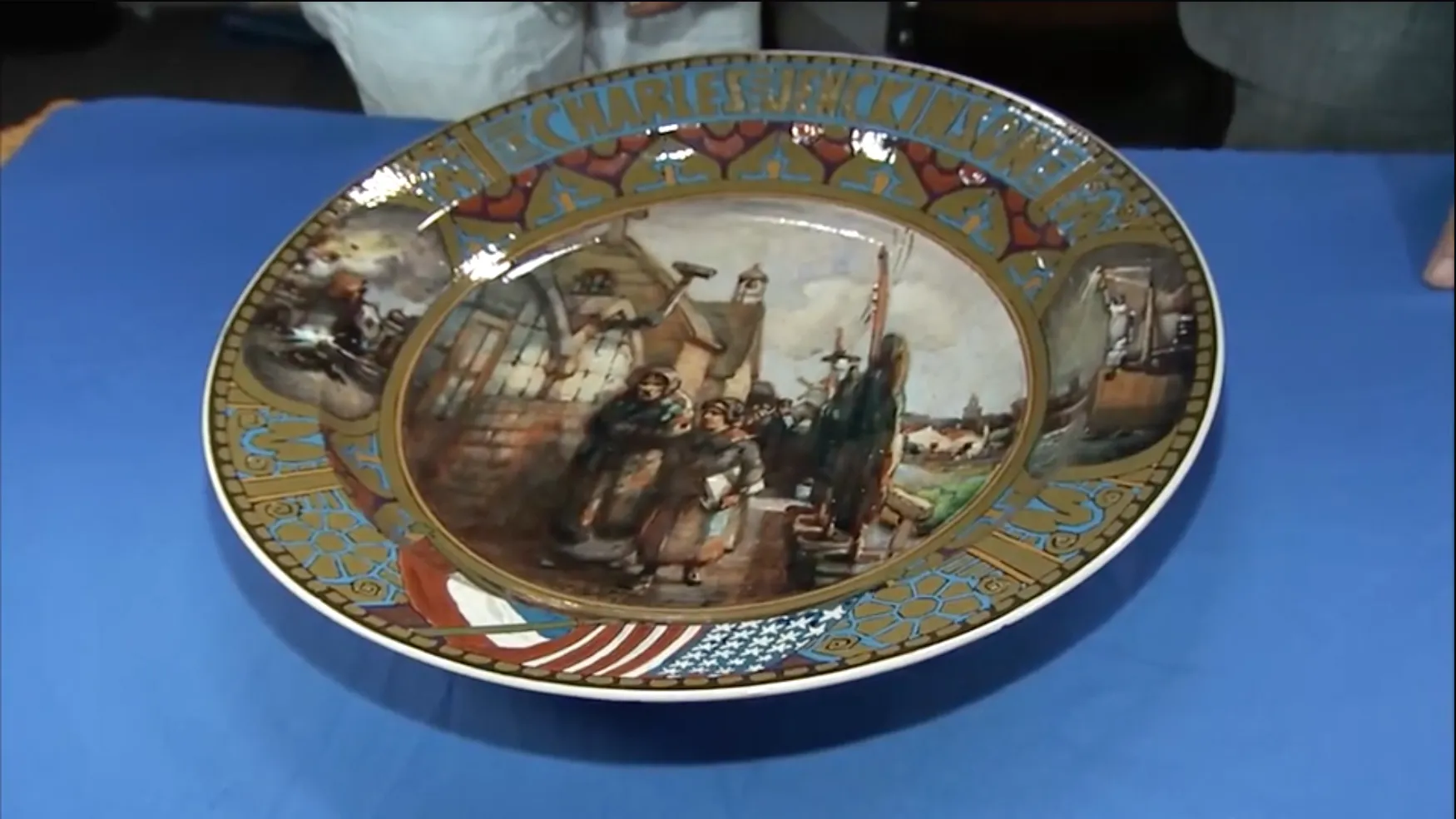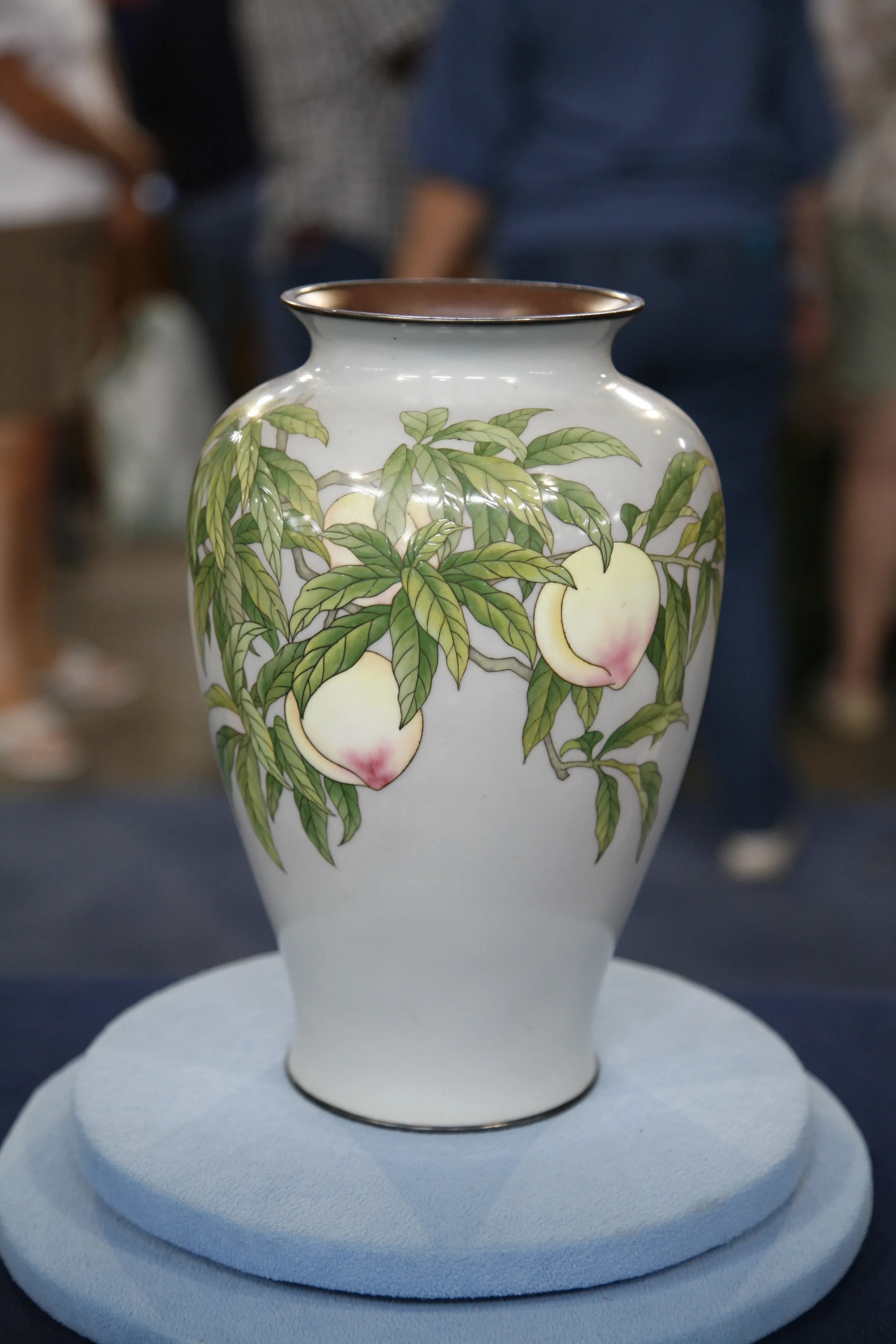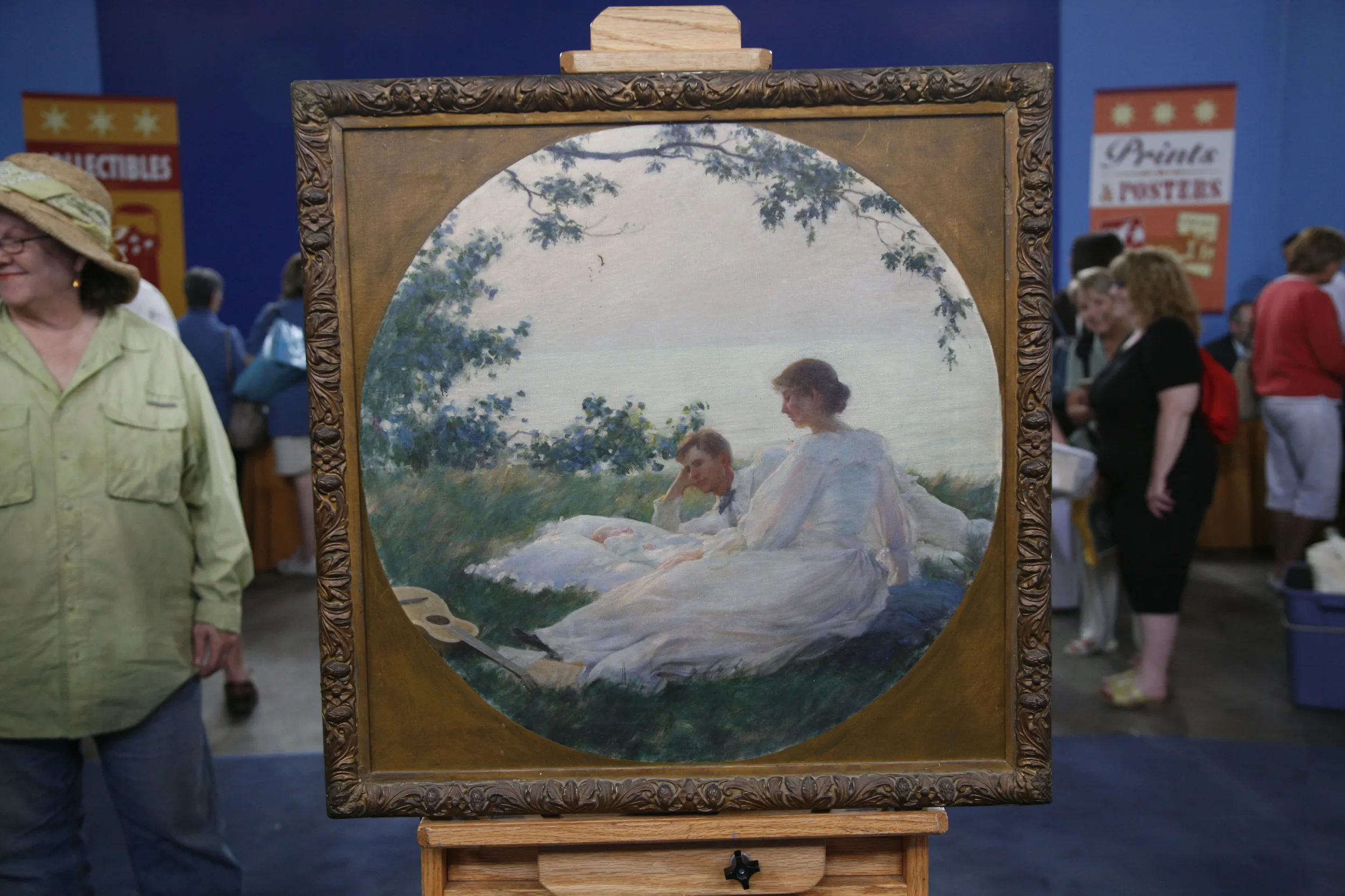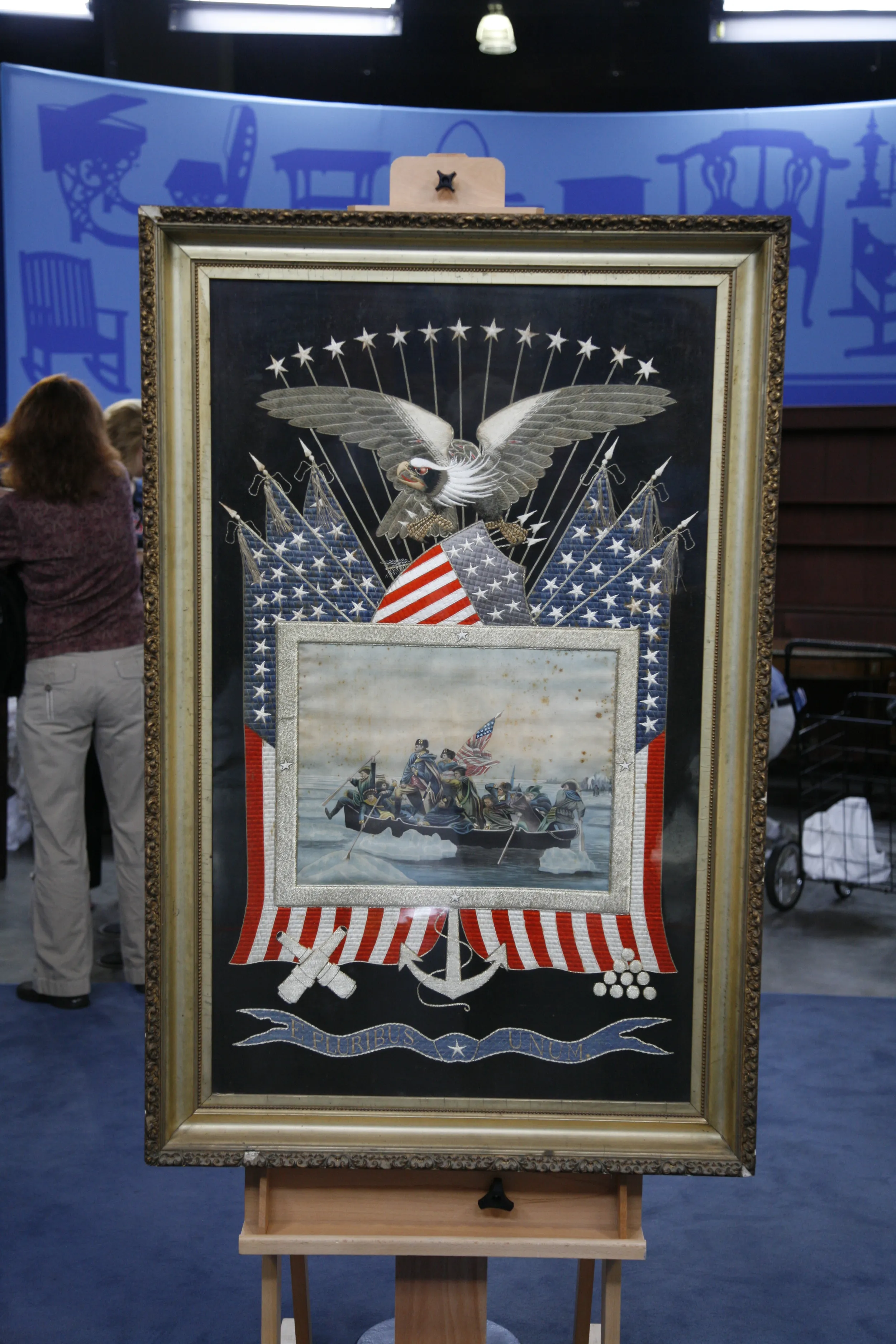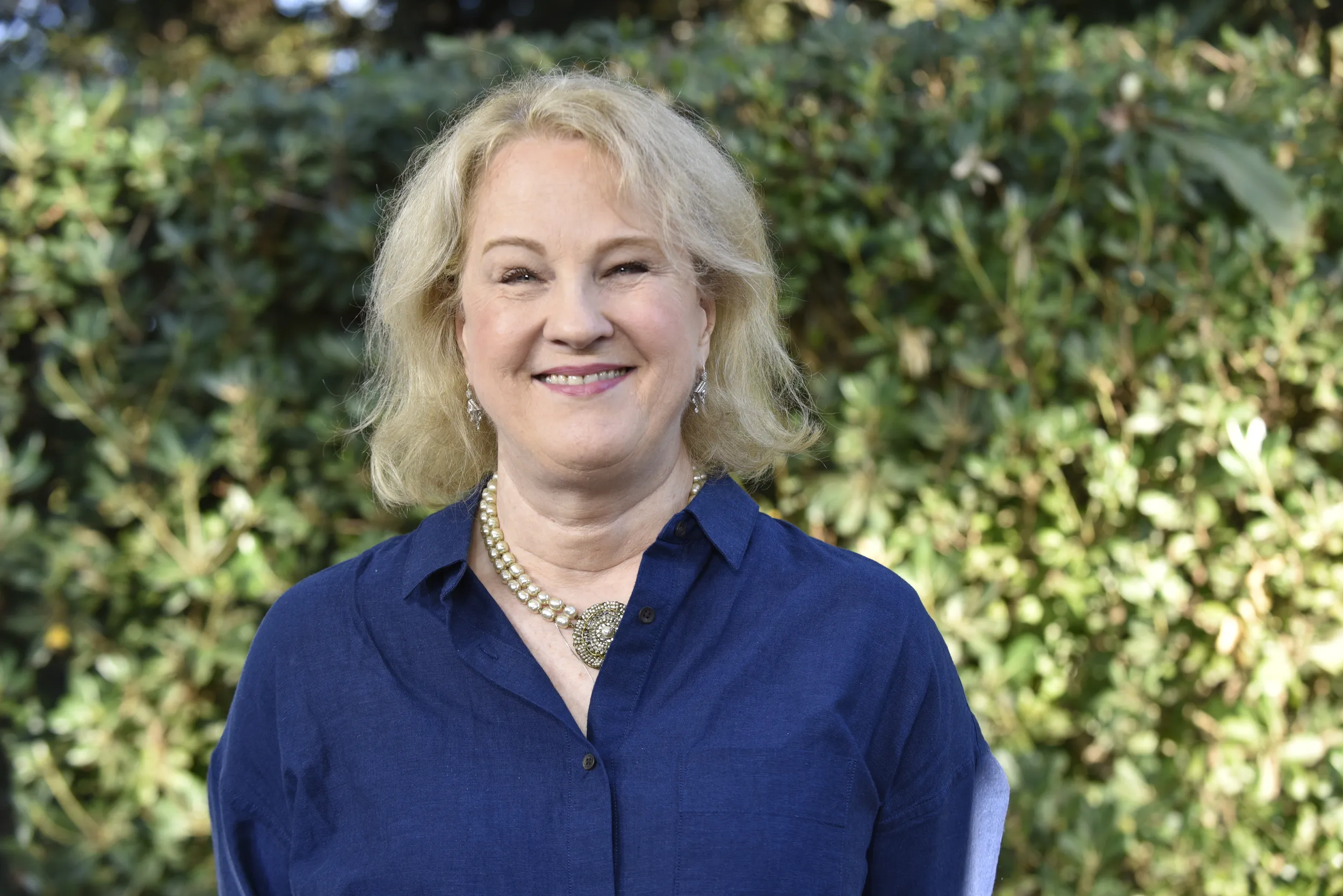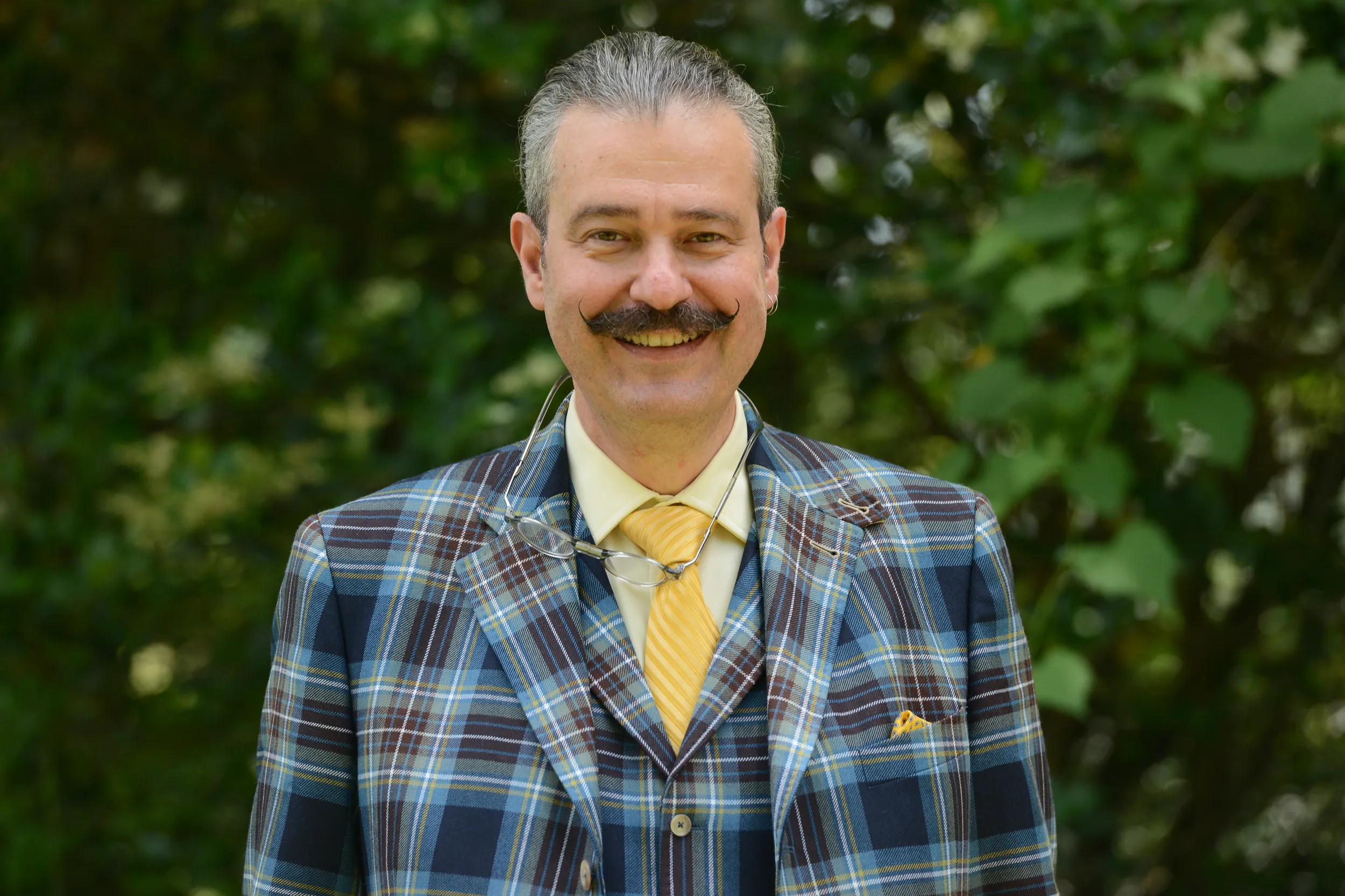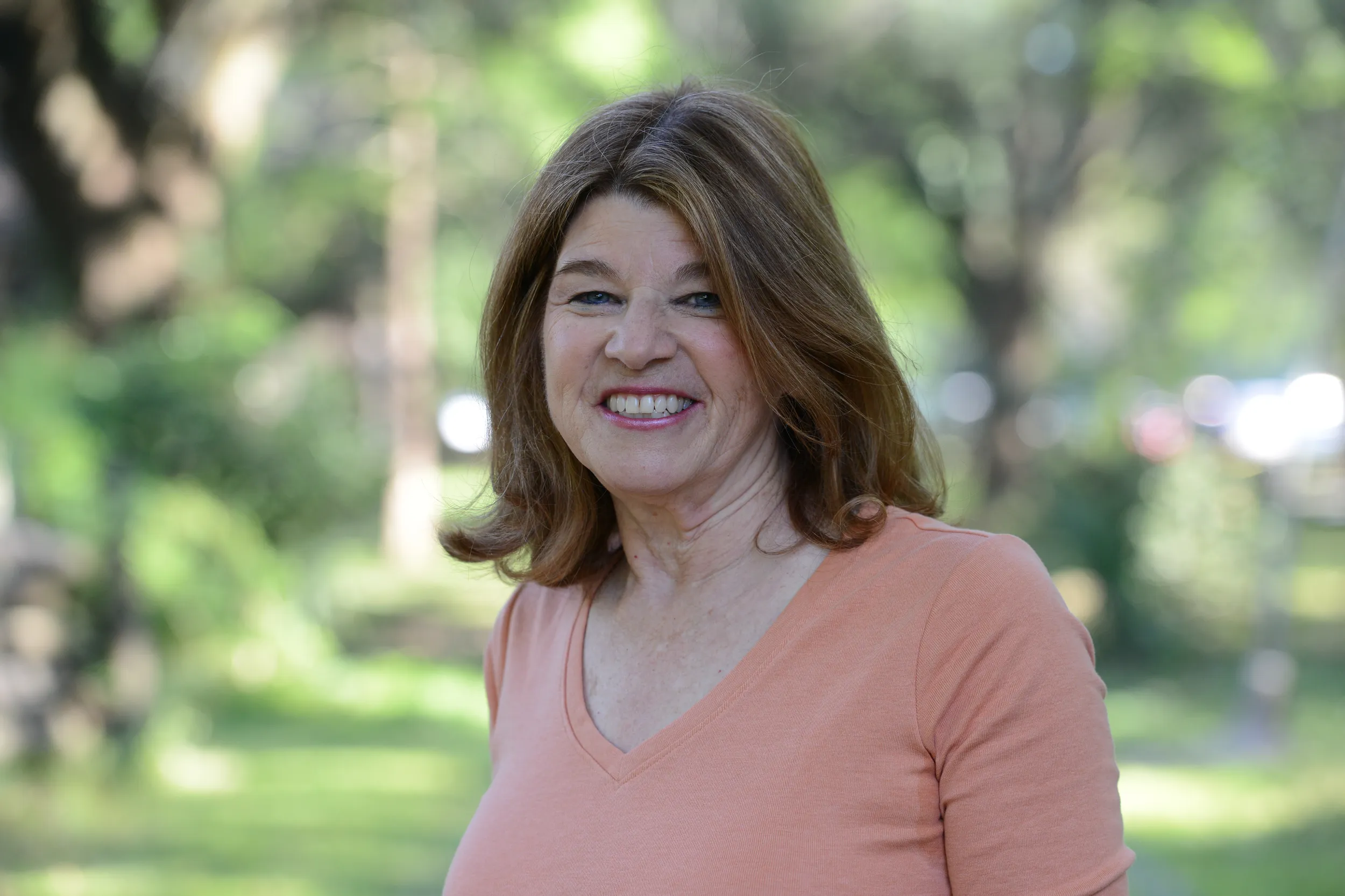APPRAISER: You always hear about somebody that wins the lottery.
GUEST: Yeah.
APPRAISER: This button won the lottery.
GUEST: The hair is standing up on my arms. I can't believe this. (laughs)
APPRAISER: Me, too.
GUEST: (laughing): That's unbelievable.
APPRAISER: (laughing)
HOST: 15 years ago, ANTIQUES ROADSHOW stopped in Connecticut's capital city, Hartford. Guests traveled from New England and beyond to share tales of their treasures with our experts.
GUEST: I thought it was a purse when I first found it.
APPRAISER: Mm-hmm.
GUEST: And it turns out it's a, a wallet pistol.
APPRAISER: It's a nice thing to think about that maybe this girl did wear them when she danced with George Washington.
HOST: How have their stories and our appraisers' evaluations held up since then? Find out in this look back at Hartford.
GUEST: I collect posters having to do with women, but normally posters having to do with, uh, World War I. And I found this, and I had never seen a women's suffrage poster before, so I was very interested. I bought it and then I tried to research it, and I haven't been able to find any posters on women's suffrage. And I even went to the Library of Congress six years ago and they didn't have any suffrage posters.
APPRAISER: When you bought it, uh, how much did you pay for it?
GUEST: I think it was either $50 or $75.
APPRAISER: Do you know anything about the date of the poster?
GUEST: Well, it's got to be before 1919. And I don't think it says anything there, but I did research the artist. And the woman who painted it was from Rochester at the beginning of the century. And it was just a painting that had nothing to do with women's suffrage, so I know it's early 19...
APPRAISER: Yeah, that's right, and I... Was it 1920 that the 19th Amendment was passed, giving women the right to vote? I think it's...
GUEST: I think it's, well, 1919 or 1920, yeah.
APPRAISER: In that period. The women's suffrage movement was the movement to give women the right to vote. And it was gaining speed in America. America was not one of the first countries to ratify that right. We sort of came to that realization slowly. Now, your question to me about this poster was, "Is it real?" It is real. I've never seen a reproduction of the poster. In fact, I've actually never seen the poster before. I've only seen it in some of my reference books. Do you know where the quotation is from?
GUEST: I used to, but I can't remember.
APPRAISER: I, I'll be honest. I, I'm not too familiar with the Bible, but I did look it up.
GUEST: It is the Bible, right?
APPRAISER: It's Proverbs, uh, 31:31. It's a wonderful sentiment. And if you look at the image of the woman in this organic way, you see why, women as part of the Earth, women should be given the right to vote. They should be given the fruit of her hands.
GUEST: Right.
APPRAISER: The poster is not in great condition.
GUEST: It's not, yeah.
APPRAISER: There's a lot of little areas where water has gotten in and it's begun to become eroded. This is metallic gold ink. So I think the water was reacting with the metallic gold and it's begun, basically, to, to freckle or to become foxed. There are some repaired tears, also. I'm not going to be too critical about the condition. The theory is, when you find the Holy Grail and there's a chip in it, you've got to take it for it is. The image was so popular and was so important to the American suffragette movement that it appeared not only in posters, but also on pamphlets, on brochures, and on magazine covers. This was a ubiquitous image...
GUEST: Interesting.
APPRAISER: ...for the American suffragette movement. And you don't see too many suffragette posters because the movement didn't have that many posters.
GUEST: Right.
APPRAISER: Curiously, you'll find a lot of suffragette posters from England. The suffragette movement in England had a far better graphic tradition. Works by this artist have sold before in the $7,000 to $10,000 range. But because of the social importance of this poster, because of the rarity of this poster, I would estimate it at auction at $10,000 to $15,000.
GUEST: Wow.
APPRAISER: And really think that's just the beginning. I don't know where it could finally end up.
GUEST: Well, that's fabulous.
GUEST: This is a book, uh, Twenty Thousand Leagues Under the Sea, that my, uh, great-uncle used to own. He passed away in 1997. My father inherited his book collection, and he had us all come out and pick what we wanted. So my wife picked this book out. She liked the, uh, the pictures, the engravings.
APPRAISER: So you're a book collector, too.
GUEST: Yes.
APPRAISER: A-And what sort of books do you collect?
GUEST: I like history books.
APPRAISER: What you have here is a first American edition of Jules Verne's Twenty Thousand Leagues Under the Sea. Your book is interesting to me because it proves that there's an exception to every rule. Now, I always tell people to collect books in the author's country of origin. Those are what we call a true first edition. If you have the first edition in another country, then we call it the first English edition, the first American edition, the first French edition.
GUEST: Okay.
APPRAISER: Which means the first appearance in that country. And usually that first edition is the most valuable, and then those later editions are lesser value. You've got a first American edition that's actually more interesting than some of the earlier editions. Twenty Thousand Leagues Under the Sea was originally published in France in 1869 and 1870. It was translated into English and published in England, so the first English edition was 1872, and then you've got an American edition with an edi, with an imprint of 1873. And so if you look down here, it says "Boston: James Osgood and Company, 1873." This book was printed from the same sheets as the British edition in 1872, sent to America, where they changed out the title page, and then published for an American audience. We think what happened to most of the books that were published at this time is that they were destroyed in the Boston fire of 1872, so actually this is one of the true rarities of world fiction. How do I know it's that rare first American edition that nobody seems to be able to find? One is, we know this publisher, the James Osgood and Company. After they burned down, they went to a different publisher and they have a different title page. We also know that it is that rare edition, one, because if you look here on the cover, this is what we call a point. In book collecting, a point is a characteristic that differs from book to book. So a point on this book is that the title says "Twenty Thousand Leagues Under the Sea," but the title page says "Twenty Thousand Leagues Under the Seas."
GUEST: Oh, wow, wow.
APPRAISER: They corrected that later on. Another point is that if you look at this little vignette on the cover here, it's actually little jellyfish floating in the sea, and then when they went back and reissued, they were reissued with a picture of Captain Nemo. Have you ever had this appraised?
GUEST: Yeah, about five or six years ago. The library in our town, for $20, you can bring in some books. And I brought in my Civil War books and... (chuckling): They weren't, they weren't worth much, but my wife wanted to bring this. At first he said $300 to $500 if it was that second publisher. This, he said, maybe, you know, $1,000 to $1,500. And he couldn't find any more information. So I kind of forgot about it. We locked, we wrapped it in plastic, like he said, and put it in a fireproof, uh, lock cabinet.
APPRAISER: Uh-huh.
GUEST: And then when I saw the ANTIQUES ROADSHOW come, and I said, well, my wife wanted to bring it.
APPRAISER: The issues that predate this one are worth less. That first British edition you can get for about $1,000 today. This copy is probably a $10,000 book-- $10,000 to $15,000 at auction.
GUEST: (chuckling): Wow! Holy cow.
APPRAISER: So I think even though you think you're a collector, your wife's a little bit better at this than you are.
GUEST: Yeah, she's got a better eye than...
APPRAISER: Yeah, she's got better taste.
(both laughing)
APPRAISER: It is a William & Mary, uh, circa 1735. It is Connecticut, so that's the great thing. Here we are in Hartford and you have a Connecticut chair. For a side chair like this, usually they're $1,500, $2,000. This one's worth about $4,000.
GUEST: Wow.
GUEST: My wife always says I'm very cheap and I'd call it frugal. They had it for $1.50 at a yard sale and I said, "Well, that's within my price range," so...
APPRAISER: Your dollar and a half at the yard sale bought you an 18-karat-gold enameled cigar band ring... ...from Cartier.
GUEST: All right. Not a bad investment at all.
APPRAISER: I guess it pays to be cheap.
GUEST: Guess so, huh?
(both laughing)
GUEST: I received it as part of an inheritance from an aunt who was the wife of a partner of Andrew Carnegie in Pittsburgh, Pennsylvania. So...
APPRAISER: So she had some nice things, I'm sure.
GUEST: She was a very elegant person. I was drawn to it because it has so many different elements of it.
APPRAISER: When I looked at it the first time, what I was drawn to was the wonderful combination of colors. I love that it has the step-cut jade, and then it's got diamonds, of course, and then it's got rock crystal. This is fluted rock crystal, and wonderful accent of coral. But what was strange about it is the outer rim, because it really doesn't make sense for it, because the center is clearly Art Deco...
9Mm-hmm. ...and the rim is sort of later, 1940s. So I started to really examine it, and what do I see is, I see little, tiny numbers.
GUEST: Hm.
APPRAISER: And whenever we see that kind of numbering, we say, "Maybe this has a signature." But it was very difficult to see. Underneath these gold rings I was able to make out first, "made in France."
GUEST: Hm.
APPRAISER: And then on the other side, "made in France"-- who would have made this? So I was hoping for a big name, and you know what? I got a great name-- Van Cleef & Arpels. Van Cleef & Arpels made this probably in the late '20s, and it was a dress clip.
GUEST: Mm-hmm, mm-hmm.
APPRAISER: Which you would just clip on. And what happened with these dress clips is that over time, they were changed. Either the mechanism came off or it just was out of fashion, because in the '40s, what happened is, yellow gold was fashionable.
GUEST: Mm-hmm.
APPRAISER: So what someone did was actually took a very ordinary yellow gold circle brooch and took it to a jeweler and they just stuck it on. They didn't even pay attention... (chuckling): ...that it had this great signature...
GUEST: Amazing.
APPRAISER: ...and hid it!
GUEST: Amazing, yeah.
APPRAISER: Which today, what we would do is, take it off, try to put it back as a dress clip.
GUEST: Mm-hmm.
APPRAISER: But if you like the way it looks, you're probably just gonna leave it just the way it is.
GUEST: I wore it into a jeweler's shop one day in New Haven, Connecticut, and the jeweler said, "That's a beautiful brooch." And he said, "It's very unusual. I've never seen anything like it." But that was the end of our conversation.
APPRAISER: That was, yeah. The signature is a driving force. This brooch, just the way it is, in its altered state...
GUEST: Mm-hmm.
APPRAISER: ...I would say, if you had to go to public auction, we'd estimate it $5,000 to $7,000.
GUEST: Wow, that's...
APPRAISER: Which is great.
GUEST: ...extraordinary.
APPRAISER: If it was intact, probably $10,000 to $15,000.
GUEST: No kidding, yeah.
APPRAISER: So you've got a lot of value here.
GUEST: Thank you.
GUEST: My grandmother gave her to me as part of a doll collection. She got her in 1947. She used to take in ironing and she paid $15 a week to get this doll and she paid $75 for it when she got it. I now she's a Bru, which is a French doll. I know she's probably the best doll in my doll collection. When I was a child, it was a doll I was not allowed to play with.
APPRAISER: We know it's a Bru-- it's a very, very beautiful Bru, made in France in the late 1880s. She has a closed mouth, as you see, nice brown paperweight eyes. Her original wig, which you were sort of worried about that a little bit?
GUEST: Yes.
APPRAISER: Don't change the wig. Even though it's a little bit worn, leave her wig alone. Completely original clothes, which are wonderful-- her hat, her dress, her shoes. Shoes are not marked Bru; they're unmarked, but they're period shoes from the same time. She has a leather body with wooden lower legs. Bisque head. Bisque shoulder plate, which swivels, pierced ears, solid glass eyes, and just a lovely... The face people want to see. Little hint of a tongue there, which the collectors love. The quality of the bisque is very good. And did you have any idea maybe of the value of the doll at all?
GUEST: Well, I thought maybe around $5,000.
APPRAISER: That's quite a lot of money. Do you want to hear the good part or the bad part?
GUEST: Let's hear the bad part first.
APPRAISER: Okay. Well, the bad part is, she's got something replaced on her. Do you know what that is?
GUEST: No.
APPRAISER: It's her arms.
GUEST: Oh, all right.
APPRAISER: Her arms are actually German bisque arms.
GUEST: Okay.
APPRAISER: Her hands must have broken years and years ago. She probably went to a doll hospital and they put the German hands on. They could have been broken in the 19th century, early 20th century. That hurts her value. But she's still worth a little more than $5,000. So, with the replaced arms, her value on today's market at a doll show or a good auction would be around $15,000.
GUEST: Wow.
APPRAISER: If you could find the original arms-- which are very hard to find, but-ch they are out there somewhere-- expect to pay as much as $2,000 for a pair of those arms. But it increases her value to $20,000 to $25,000. So it's worth looking for.
GUEST: Okay.
GUEST: I thought it was a purse when I first found it. And it turns out it's a, a wallet pistol.
APPRAISER: Mm-hmm.
GUEST: And that's about all I know about it.
APPRAISER: It is a change purse, as you see. And then when we turn it this way, this side reveals a pistol. So, where'd you get it?
GUEST: I was renovating a house down in Essex, a circa 1800 center-chimney Cape, and it was in one of the side compartments behind the fireplace, tucked away in the back.
APPRAISER: Mm-hmm.
GUEST: And when I first found it, I, hoping there was some old money in it.
APPRAISER: So you didn't find any money.
GUEST: No money.
APPRAISER: But you found a gun.
GUEST: When I finally opened the other side and found the pistol.
APPRAISER: Right here on the side is a button, and if you push the button, it will reveal the barrel. And, also, underneath, a folding trigger will come out. The concept behind the pistol was that as a robber came up to you and trying to take your money from you, as it appears that you're fumbling with your purse, you're actually preparing to shoot. It's based on a pin-fire system, and right here at the base there's these little holes, and a little pin would stick out of a back of a cartridge, and when you pulled the trigger, this hammer would come and hit the pin and it would discharge the projectile through the end here.
GUEST: Oh.
APPRAISER: This was designed by Oscar Frankenau from Nuremberg, Germany. And he took out a U.S. patent for this idea in November of 1877. So this pistol and this change purse comes from around the late 1870s, probably made in Germany. In the late 19th century, there was a lot of interest in all sorts of different types of concealed firearms, and this is just one variation on the theme. They were not necessarily that popular, so they're fairly scarce on the marketplace. I think that if this was to appear at auction, it would bring somewhere between $3,000 and $5,000.
GUEST: Excellent.
APPRAISER: Mm-hmm. So, that's just as good as finding money, right?
(both chuckling)
GUEST: Uh, you're... Better.
GUEST: It was my grandmother's. I believe it was her mother's before her. It passed to my aunt. When my aunt died, I was allowed to choose one thing that was special and I chose this. And my cousin said, "It's badly damaged, it's falling apart." I said, "I understand that, but I remember it from Grandma and I'd like to take it."
APPRAISER: Mm-hmm.
GUEST: So he said, "Fine."
APPRAISER: It is, uh, a piece of 18th-century furniture.
GUEST: Okay.
APPRAISER: And it's from Rhode Island. And the way we know that is by first, if we look at the legs on this piece, there is this arris knee-- that's "pointy knee." And also that pointed slipper foot is also a Rhode Island detail. And a vigorous skirt. And so when we see pieces like this, it indicates a Rhode Island origin. The other part is that the way the legs are attached to the case...
GUEST: Or, or badly attached, right now. (laughs)
APPRAISER: Well... That's very interesting that you say that, because most pieces like this, the leg itself has a piece of wood that follows up, so that the leg is all one piece that goes down the case and holds it together. But in Rhode Island, one of the things they did was, they turned a leg, and they attached it up through the case. This leg is a separate piece of wood from the case itself. And it only comes up, probably, in, in the interior, up to about here. So it makes the legs very wobbly. It's just a quirky, uh...
GUEST: Okay. (laughs)
APPRAISER: ...construction, uh, detail. I often see pieces of furniture like this when I'm on appraisals in people's homes, and it's, it's in the dining room, and they say to me it's a sideboard or they say it's a lowboy.
GUEST: Mm-hmm.
APPRAISER: But in fact it is the bottom of a highboy. This is the base of a highboy. And if you look behind us, you'll see a highboy. So this piece originally would have had a big chest of drawers over the top of it.
GUEST: Interesting.
APPRAISER: This whole top is brand-new. But when we say "brand-new," it was changed probably in the 19th century. Someone in the 19th century inherited a highboy, decided they were going to modernize it.
GUEST: (chuckling): Okay.
APPRAISER: They took it apart and they painted it black, and they put this gold striping on it, so originally it was a wood-colored piece.
GUEST: Interesting, okay!
APPRAISER: And they probably used the top as a chest of drawers in their bedroom...
GUEST: (chuckling)
APPRAISER: ...hauled the highboy base to the dining room and used it as a server. The gold striping on it is very evocative of 19th-century design. Original brasses, so they didn't change the brasses, luckily. This great Chippendale batwing brass. And I like it painted just the way it is. In fact, I wouldn't recommend taking the paint off, even though it had been repainted. So the value of this piece... I had a conversation with some of my antiques dealer friends behind the scenes, and for auction, I probably would figure estimating it in the $2,000 range.
GUEST: Okay.
APPRAISER: But some of the dealers thought, "Well, that could sell easily for $4,000." So, between the range of $2,000 and $4,000.
GUEST: Okay, okay. Well, that's wonderful, that's great. But it's interesting, I never would have expected that it would have had a top.
APPRAISER: What you have here is actually a quite early Moghan Kazak rug from the South Caucasus, uh, which is a strip of land that runs between the Black and Caspian seas right above Northwest Iran. Most rugs of this type in that region date from the 1880s, 1890s. But because of some of the design elements here, the weave and the very simple border, uh, I would date this piece a bit earlier, and date it into the 1870s.
GUEST: In about 1946 or 7, my father was an engineer in a paper mill that got a trainload of scrap paper from Washington. A whole bunch of them were these things, which my father spotted as ships' logs of warships. And he's got out of the bin, which was ready for emulsification, the ones for December 1941. And this one, for example, includes December 7, 1941, Pearl Harbor Day.
APPRAISER: So he was really supposed to destroy these, wasn't he?
GUEST: He was supposed to destroy them, but, uh, he skimmed the lot.
APPRAISER: (chuckles) Well, I'm glad he didn't. What you've brought to us today was both deck logs for the USS Trever. And I'll just read a little excerpt of, from the log. "Went to battle stations, Japanese conducting air raid on Pearl Harbor. Opened with .50-caliber machine gun at close targets."
GUEST: Right.
APPRAISER: The Trever was a destroyer minesweeper, and it was nestled in amongst some destroyers right, right during the air raid. So you couldn't really have a more amazing real-time description of what was happening, written in the hand of someone who was there at the epicenter of the, of the Second World War. Conservatively, at auction, I would think $2,000 or $3,000 for the set.
GUEST: Wow.
GUEST: I brought this Tiffany vase. It belonged to my mother. She collected antiques for many years, and this was one of her first pieces of Tiffany. She bought it sometime in the 1970s. She bought it from a antique dealer here in Connecticut.
APPRAISER: Was the antique dealer a Tiffany specialist, do you know?
GUEST: They dealt a lot in Tiffany and other glassware, as well. She thought it might be an experimental piece, too, but she wasn't sure.
APPRAISER: It's not an experimental piece, but it dates probably from about 1895. And the reason I know that is because it's numbered in a very special way on the underside.
GUEST: Okay.
APPRAISER: It has a little "o" and then it has a four-digit number. This kind of numbering system was used from 1895 to 1900, and there are approximately ten-and-a-half thousand pieces made un, with this prefix number. At this time, Tiffany actually wasn't inscribing these pieces with LCT, or Louis Comfort Tiffany. He was putting paper labels on the bottom and then putting these numbers on, the registration number, on the bottom, and that was it. People have been known to put fake labels on the bottom of glass pieces, but I can assure you that this is an original. In the old days, when people were first doing research on Tiffany, someone speculated that the little "o" meant that it was a special order. There's actually nothing to support that theory. It was just an early numbering system. And one of the reasons you can tell is because a lot of the vases look exactly the same. And, frankly, ten-and-a-half thousand special-order pieces of glass is an awful lot of special orders. This typifies the early types of pieces. It's a double-gourd form, and you can see that they've tried to experiment with iridescent decoration. And it's a little faint on this one. That they're just working on it. These are the early days. And then you have this lovely feathering going through the piece. Sometimes you would see it in a smaller size, and this is about as, as big as this piece ever got, and...
GUEST: She affectionately called it "The Blob." (laughing)
APPRAISER: The Blob?
GUEST: The Blob.
APPRAISER: Well, and I bet she never put any flowers in it.
GUEST: No, she didn't. (laughs)
APPRAISER: She wouldn't because this really wasn't meant to be a utilitarian object. It was, it was the object itself-- this is the art. And that's why it's called art glass. Have you ever had it appraised?
GUEST: Um...
APPRAISER: Or did your mother ever update anything on this?
GUEST: My mother had it appraised in the early 1980s for $3,500.
APPRAISER: There are now more and more collectors who really want to specialize in just the early pieces...
GUEST: Really?
APPRAISER: ...particularly from the 1890s. So the price for these has appreciated. If this were in a retail shop today, it would easily sell for between $9,000 and $12,000.
GUEST: Wow.
APPRAISER: It's a lovely piece of glass.
GUEST: My mom had wonderful taste.
GUEST: They're inherited. I don't know if they're from my grandmother. Some of ‘em are from my grandmother, some of ‘em are from my mother, some of ‘em my mother bought in, uh, this, they used to call ‘em secondhand stores.
APPRAISER: Right.
GUEST: And she started collecting, I guess, in the '40s, and I have a lot of her things, and I picked these out because I was interested in them.
APPRAISER: You've got several of these brown transferware plates.
GUEST: Yes.
APPRAISER: And they're really well-marked on the, on the back. It's got the manufacturer, which is Alfred Meakin, which is a company in Staffordshire, England. And it, it's the Fair Winds pattern. And we might say, "Well, how old are these plates?" But there's a really interesting clue in helping date these plates. Besides having information about the type of pattern…
GUEST: Mm-hmmm.
APPRAISER: but there's some information here, and it says "dishwasher- and detergent-safe." So these are actually fairly recent. These are probably from about the 1970s.
GUEST: Okay.
APPRAISER: And they're not really very valuable, but they're fun, decorative plates...
GUEST: Mm-hmm.
APPRAISER: ....that a lot of people might have at home. Now, the next plate we're going to look at is this wonderful hand-painted and hand-enameled plate here, which is very typical of the English Aesthetic movement, which was inspired by Japanese design.
GUEST: Okay.
APPRAISER: And also Japanese cloisonné. The bottom here was painted to look like cloisonné, which is actually enamel on metal, but they made a similar design on English bone china.
GUEST: Mm-hmm.
APPRAISER: Now, on the back it looks like it's completely unmarked. But if you look at it really closely-- you have to hold it in the light just right, it's hard to see...
GUEST: Mm-hmm.
APPRAISER: ...there is impressed "Mintons," and then there are several other little symbols there, including a little symbol which I looked up on a chart. An-it tells us this plate was made in 1888. And that's one thing that we like about Minton china. There's usually a date mark, so we know exactly when it was made.
GUEST: Mm-hmm, mm-hmmm.
APPRAISER: Then the final plates that you have-- you have a pair of plates here-- and they're very finely hand-painted with scenes. If we take a look at the mark on this one... And they have similar marks.
GUEST: Mm-hmm.
APPRAISER: First of all, they have the mark of the manufacturer and then a title hand-painted in black. Now, the manufacturer is the Royal Porcelain Manufactory in Berlin, often known as KPM Porcelain. And this particular mark was used between 1849 and 1870. And they both have the title of the location. Now, this one is Heisterbach. Heisterbach is a famous ruined abbey in Germany. And the other one is labeled Braubach, which is on the Rhine River.
GUEST: Mm-hmm.
APPRAISER: And this is the Marksburg Castle at the top. The little plates, from the 1970s, are worth about five dollars apiece. Now, the English plate, the Minton plate, is probably worth between $400 and $600 in a retail-type situation.
GUEST: Mm-hmm, mm-hmm.
APPRAISER: And then the KPM plates are the best ones.
GUEST: Mm-hmm.
APPRAISER: They're worth between $2,000 and $3,000 for the pair in a retail situation.
GUEST: All right.
APPRAISER: They're, they're terrific plates.
GUEST: I brought in military buttons. They were in a attic, given to my mother from f, friends who used to take care of her when she was little. I've had them now about, I'd say, a good 25 years. I just keep them in a box.
APPRAISER: What's the card for?
GUEST: This card belongs to an actress or a performer, uh, Bessie Gillette. She was a performer with the Hammerstein Grand Opera Company in 1907.
APPRAISER: Were the buttons hers?
GUEST: They were not hers. Uh, story is that these belonged to her paramours, if you will.
APPRAISER: (chuckling): Uh-oh.
GUEST: (chuckling): I'm sure-- she was a performing artist, and I'm sure she had quite a bevy of young men coming to see her.
APPRAISER: Bless her heart.
GUEST: (laughs)
APPRAISER: We have a variety of uniform buttons, military uniform buttons. The first two are the artillery officer eagle "A" buttons.
GUEST: Mm.
APPRAISER: They have the eagle on the front, they have the "A" in the shield, and the "A" denotes the artillery branch of service. From the front, they look identical.
GUEST: Uh-huh.
APPRAISER: What's cool about them is the back. We have the Horstmann of Philadelphia maker mark on the back.
GUEST: Right.
APPRAISER: Of this one. Which is a good early back mark. That's what you refer to the stamping on the back of the button as, is a back mark. They change as time progresses.
GUEST: Mm.
APPRAISER: The construction and the makers change. This one has a large-letter "Waterbury Button Co."
GUEST: Right-- right, right.
APPRAISER: ...in Waterbury, Connecticut. One of the largest button makers. This particular style is post-Civil War, and to collectors, little details make big differences.
GUEST: Uh-huh.
APPRAISER: This button, being Civil War, is about a $60 button.
GUEST: Uh-huh.
APPRAISER: This button, being postwar, is about a $10 or $15 button.
GUEST: Uh-huh.
APPRAISER: So it's four times more valuable being a Civil War button than a postwar button...
GUEST: Right, right.
APPRAISER: ...with the same face.
GUEST: Right.
APPRAISER: These two on this side...
GUEST: Mm.
APPRAISER: ...are pre- and postwar, as well.
GUEST: Okay.
APPRAISER: This one is the National Guard of Pennsylvania.
GUEST: Mm.
APPRAISER: It has the "NG" at the bottom for National Guard, and it has the state seal of Pennsylvania.
GUEST: Uh-huh.
APPRAISER: You always hear about somebody that wins the lottery.
GUEST: Yeah.
APPRAISER: This button won the lottery.
GUEST: Oh, yeah? (chuckles)
APPRAISER: The postwar one is only worth about $15.
GUEST: Uh-huh.
APPRAISER: $15, $20.
GUEST: Yeah.
APPRAISER: This one is pre-war. It's for the State of Arkansas.
GUEST: Mm-hmm.
APPRAISER: The northern company that made it, Horstmann & Allien, they were located in New York. They manufactured buttons and shipped them south, which wasn't very, uh, highly looked upon in that timeframe...
GUEST: Oh.
APPRAISER: ...which is the late 1850s, early 1860s.
GUEST: Okay. Oh, okay.
APPRAISER: They shipped only a small quantity to Arkansas. Therefore, there's only a handful of ‘em in existence.
GUEST: Oh.
APPRAISER: You can get several of the states fairly commonly. You can find Virginias, you can find South Carolinas, you can find North Carolinas.
GUEST: Uh-huh.
APPRAISER: Very few people have Arkansas.
GUEST: Oh.
APPRAISER: In a retail situation, that button would bring at least $5,000.
GUEST: Really? Wow.
APPRAISER: (chuckles)
GUEST: (chuckles) That's incredible.
GUEST: It was my father's. And he died and he had six of these paintings. And my stepmother gave one to each of his children.
APPRAISER: He had had them for how long, do you know, or...
GUEST: Oh, for as long as I remember. Probably late '50s, early '60s.
APPRAISER: Yeah, do you know anything about who the artist is or anything, have you...
GUEST: I know his name is Cahoon.
APPRAISER: Okay. Ralph Cahoon was a Cape Cod artist and known for these whimsical, nautical, 19th-century-inspired motifs, primarily with mermaids and sailors. Some of them had hot air balloons. He was born in 1910. He died in 1982. This is a mid-20th-century work. This is a, uh, oil on masonite. He lived on the Cape, uh, in Cotuit, I think, most of the time.
GUEST: Mm-hmm.
APPRAISER: And after his death, his prices and, uh, recognition started to gain quite nicely. This is basically the original frame. I'm sure Ralph put it in this frame. It's a Victorian frame, very typical of his work. Nice, bright picture here. We have a lot of the bells and whistles. We have 13 mermaids; we have a sailing ship with sailors; and then we have an American flag. And we're either in the, it looks like the Antarctic, but it could have been in the North Pole. This is a nice, cool picture. I was very excited when I saw it. I lived on the Cape for a number of years and knew a lot of friends of his and heard a lot of stories about him over the years. Sounded like a wonderful guy.
GUEST: Sense of humor.
APPRAISER: Oh, yeah.
GUEST: (chuckles)
APPRAISER: Wonderful, folky, whimsical painting. And I think a good auction estimate would be $30,000 to $50,000.
GUEST: Great. Good price.
APPRAISER: (chuckles)
APPRAISER: Well, it's a great style of brooch, and it's set with some cabochon sapphires and this really great comet star motif. I think-- and we have to do some more research on it-- that it could possibly be by Paul Flato, who was a famous American jeweler, doing a lot of jewelry in California, as well as in Texas. We've looked at it and concurred that probably at auction this could sell anywhere between $20,000 and $30,000.
GUEST: Oh. (chuckling): Great.
APPRAISER: So, it's... Are you surprised?
GUEST: Yeah, I mean... I like to wear it with jeans and a T-shirt.
GUEST: It was done by my dad, Hardie Gramatky.
APPRAISER: Your father?
GUEST: Yeah. We have other copies, but this has always been my favorite.
APPRAISER: So this is your personal copy...
GUEST: Yes.
APPRAISER: ...of your father's book, Little Toot.
GUEST: Yeah, a first edition.
APPRAISER: And tell us this-- it says here "Little Toot Christening Party, October 6, 1939."
GUEST: Yeah. It was a little bit before I was born, but a Moran tugboat in New York, they went and, uh, they had famous people-- Christopher Morley, Reginald Marsh, my dad, my mom was there, and they all signed it.
GUEST: This was a gift from my father-in-law, who had it in his warehouse, and when I inquired about it, he offered for me to take it home, and that's, that's about it. I don't really know much of the history about it.
APPRAISER: You see that it's signed.
GUEST: Yes.
APPRAISER: And did you look up who the artist was?
GUEST: I have, uh, on the internet, I looked it up once.
APPRAISER: Uh-huh.
GUEST: And I didn't get a, a lot of information about him.
APPRAISER: Right.
GUEST: He's kind of hard to find.
APPRAISER: It is signed in Russian here.
GUEST: Yeah.
APPRAISER: And it's signed by the Russian artist named Eugene Lanceray. And he was born in Russia, but he actually studied in Paris. He was born in the 1840s, and he died in the 1880s. So he spent most of his career in Paris, and he was known for doing these Russian subjects. I actually found out the title of this piece, and I have to read it, and my Russian is awful.
GUEST: Okay.
APPRAISER: So I have to apologize.
GUEST: (laughs)
APPRAISER: But this is the warrior Svyatoslav from medieval times in Russia, and there's a de, inscription here in Russian on the bottom, and I managed to come up with a translation. It says, "We would rather fall in battle than bring shame upon Russia's land." And this was by Svyatoslav on his way back to Tsargrad in 970. So it's a specific historical figure.
GUEST: Right.
APPRAISER: And you have a foundry mark here on the end, which is really good to have.
GUEST: I didn't notice that, the foundry mark, but...
APPRAISER: Yeah. The piece is interesting in terms of the quality of the casting. Lanceray was known for fine-quality work. Wonderful detail in all the costume, in the horse here, and the expression. It has a wonderful patina on it. It does have some problems here, with this green. Bronze is primarily made out of copper, so this is actually a kind of corrosion.
GUEST: Can that be corrected?
APPRAISER: It can be corrected, and it's relatively easily taken care of by a professional restorer. And his work is very desirable. There is a huge interest in Russian art by Russians. They're not only buying antiques, but they're also very active in the contemporary art market. The last couple of years have been the, just the high point of the Russian art market. Do you have some idea of the value?
GUEST: Uh, that, I, I don't. I thought I saw a smaller statue for about $1,500, so I really couldn't guess.
APPRAISER: Right. There are ma, much smaller ones, but this is exceptionally large. There was a sale in London, and another model of this came up at auction, and what did it bring? $147,000.
GUEST: Oh, no, you're kidding me. I think my wife probably just fainted, I... (chuckling)
APPRAISER: (laughs)
GUEST: I can't believe that.
APPRAISER: Now...
GUEST: Uh, is that what you imagine this would be?
APPRAISER: Well, this-- again, this has condition issues.
GUEST: Right.
APPRAISER: I would think it probably has a value in the range of $120,000 to $130,000.
GUEST: Wow.
APPRAISER: Once it's restored, uh, I don't think the value will be affected.
GUEST: My head is spinning thinking about that. Wow, I'm really... oh. The hair's standing up on my arms. I can't believe this. (laughs)
APPRAISER: Me, too.
GUEST: That's unbelievable.
(both laugh)
GUEST: My husband bought these shoes for me at an estate sale in the New Haven area about 30 years ago. And one of the reasons why he bought the shoes for me is, was bicentennial time. My husband and I did living history, and he bought them for me so he could use them to make me a pair of 18th-century shoes.
APPRAISER: Did the shoes he make look anything like this?
GUEST: They were a lot bigger.
(both laugh)
APPRAISER: You know, they're larger than you think. I mean, when you look at this shoe, you think, "Oh, that's for a really tiny foot." But the foot actually comes out significantly over the heel...
GUEST: That's true.
APPRAISER: ...and because they're fabric, it lays flat.
GUEST: Okay.
APPRAISER: And something else that you told me was, they have a little history that comes with them?
GUEST: When I got the shoes home, we found a piece of paper...
APPRAISER: Uh-huh.
GUEST: ...that had a little history. The story, according to this little piece of paper...
APPRAISER: Mm-hmm.
GUEST: ...is that these shoes were worn by the daughter of a Mr. Cogswell, who was the collector for the port of the city of New Haven, and George Washington came to New Haven, and was anxious as to who he was going to bring to the grand ball and dance...
APPRAISER: Uh-huh.
GUEST: And he asked Mr. Cogswell if he could dance with his daughter, and, as the history says, these slippers were worn by his daughter.
APPRAISER: Well, you know, we're never gonna know if that story is true or not.
GUEST: That's true.
APPRAISER: What I can tell you about the shoes is that they're datable, and they're datable because of the heel. The way that it's shaped, and this, this shape was popular in about 1785, 1787. One of the things that was made in the United States in the 18th century were shoes, and shoes were made in Connecticut. They were made in New Haven, they were made in Bridgeport, they were made in Waterbury. They're really very simple. They have a linen lining. They're silk on the outside, and they have these flaps, and your foot slips in, and I think you know this about them-- there's not a right and a left foot.
GUEST: Right.
APPRAISER: And then they buckle like this. These buckles are not period. They're a replacement buckle, but it's pretty easy to find an 18th-century buckle to go on this shoe. And while many of the clothes that we find that survive of the 18th century are English, there's really a good chance that these are American. It's a nice thing to think about, that maybe this girl did wear them when she danced with George Washington. Now, you paid $50 for them 30 years ago.
GUEST: Right.
APPRAISER: In their present condition, the retail value of these shoes is $1,500.
GUEST: Okay.
APPRAISER: Condition is everything in the world of textiles.
GUEST: Oh.
APPRAISER: And they're really pretty beat up. If they were in perfect condition, they'd probably be worth upwards of $15,000.
GUEST: Wow.
APPRAISER: (chuckling)
GUEST: Wow.
APPRAISER: What drew you to these particular clubs?
GUEST: Well, I'm actually drawn to about any club that I see...
APPRAISER: (chuckling): Okay.
GUEST: ...uh, at a flea market or a tag sale or antique show. I buy 'em, I bring 'em home, put ‘em up in the loft of a barn and never see ‘em again, and it's just...
APPRAISER: How many clubs do you have?
GUEST: Uh, hundreds.
APPRAISER: All right, so where'd you find these, then?
GUEST: In May, in Brimfield, Mass., we went up to the antique show and stumbled across the box with the clubs in it. There was this and a full set of irons with it.
APPRAISER: Okay.
GUEST: And she said she didn't know anything about ‘em, and for $25, I could have the set. So I gave her the $25 as quickly as I could. When I got back to the car and I took a better look at ‘em, I discovered that they were, one, brand-new, and when I noticed the "Splendid Splinter" on the end of the club, I thought, "Odd, didn't really have anything to do with golf." And then so as I was looking over the box, and saw the tag in the box and I thought, "Well..."
APPRAISER: And this tag, of course, says, "To Ted Williams," A.K.A. the Splendid Splinter.
GUEST: Mm-hmm.
APPRAISER: When he managed the Washington Senators.
GUEST: Mm-hmm.
APPRAISER: And these were made somewhere probably around 1969, 1970, which was the first two years that Ted Williams began managing the Washington Senators.
GUEST: Okay.
APPRAISER: My question, and the big mystery here, is why they were never played with. And I can only think that, one, he was so busy managing the Senators, or two, they never got to him, for whatever reason. Toney Penna, he was the chief club designer for MacGregor. And, in fact, one of his most famous designs was an Eye-O-Matic driver for Jack Nicklaus. Most collectible golf clubs are from that era-- classic golf clubs with the persimmon heads from the '40s and '50s.
GUEST: Uh-huh.
APPRAISER: So why, then, would these have value? Not so much for being golf clubs, but just for this, the "Splendid Splinter." These clubs were sent to Ted Williams-- my guess is because they were prototypes that Toney Penna wanted him to see. He had made clubs for Bob Hope, for Perry Como, for Gary Player, Nicklaus, and Palmer, and he wanted to add Ted Williams to the list. Here's a man that not only was a phenomenal baseball player, but a world-class jet pilot, a world-class fisherman, and a darn good golfer. If you read his book, The Science of Hitting, from 1986...
GUEST: Mm-hmm.
APPRAISER: ...he talks about how much harder it is to hit a baseball than it is to hit a golf ball. If these were without the "Splendid Splinter," even though they're rare, they're just not desirable. There are far more of these clubs than collectors out there. So the value on this group of clubs-- and left-handed clubs are harder to find than right hand...
GUEST: Mm-hmm.
APPRAISER: ...would probably be an auction estimate of $100 to $300 for the group of them. And they're beautiful.
GUEST: They are gorgeous.
APPRAISER: They're stunningly made.
GUEST: They are beautiful.
APPRAISER: But, because they're Williams', I would put an auction estimate of probably $1,500 to $2,000.
GUEST: No kidding? Terrific.
GUEST: This is the crib that my father slept in when he was a baby. I found this crib in the home that my grandfather built in Waterbury, Connecticut, in 1899. I also found, in, uh, the attic of that home, the bill of sale, which documents my grandfather's purchase of the crib.
APPRAISER: Of the crib. It's called a Renaissance-revival style. These do not bring the biggest prices. But well, we have looked at it and think it's in the $800 to $1,000 range, with the bill.
GUEST: Wow.
GUEST: This plate was given to my husband's great-grandfather Charles Jenckinson-- which, it's written here-- um, by the Dutch government prior to World War I. He left New York with, uh, 1,000 sewing machines to bring to Holland for the Belgian refugees at that time. So, and in thanks for the donation from the Red Cross and the depart, the State Department, he was presented this plate as a gift.
APPRAISER: And this shows sort of the story of, of his trip and World War I.
GUEST: Yes, yes.
APPRAISER: This is, uh, uh, bombs and buildings on fire, the refugees walking through, one would assume, Holland, and the ship leaving the New York Harbor with the Statue of Liberty.
GUEST: Yes.
APPRAISER: Okay, so this is all hand-painted, one-of-a-kind piece, made in Holland for your family relative, showing this story... I've never heard of such a thing.
GUEST: Really?
APPRAISER: This is such a great piece of Gouda. By and large, Gouda did floral vases, with very pretty and a stylized floral work in bright colors. I've not seen any piece of Gouda with a, a landscape or a scenic on it, and to have one with a story such as this, this is just, uh, I wouldn't have believed it had I not seen it myself.
GUEST: Thank you.
APPRAISAL: Now, most Gouda is fairly inexpensive. It's anybody's guess, but I would have to say somewhere between $4,000 and $6,000 for this plate.
GUEST: (laughs) God.
APPRAISAL: Which would be a world record for any piece of Gouda that I know of.
GUEST: (laughing): Oh, is that right?
APPRAISAL: But, and that, I don't know what this is worth; this is just so good.
GUEST: Oh!
APPRAISAL: I'm almost speechless about it, so, congratulations.
GUEST: My husband was cleaning out a home in Fairfield County and it was going into a dumpster. He thought it was nice, and I love flowers and vases, so he brought it home, and that's how I acquired it.
APPRAISER: So he saved it?
GUEST: He saved it.
APPRAISER: It's a Japanese cloisonné vase, and it's produced by a company called Ando. And you can see the Ando mark to the base. The Ando mark is a four-arrow star within a circle.
GUEST: Mm-hmm.
APPRAISER: And And, the Ando workshop produced magnificent cloisonné works during the Meiji period. And then as they went into the early 20th century, the work's quality diminished. This is, uh, uh, going from the Meiji period into 1920, 1930. It has wonderful silver mounts at the foot and rim; a wonderful sky-blue ground of cloisonné. And it is very rare to find 80-, 100-year-old Japanese cloisonné vases...
GUEST: Mm-hmm.
APPRAISER: ...in a condition such as this.
GUEST: Yeah.
APPRAISER: This is in very fine condition. Usually we have what we call spider-web bruising...
GUEST: Uh-huh.
APPRAISER: Bruising to the shoulder.
GUEST: Right.
APPRAISER: There'll be bruising to the foot. And cloisonné is an enamel.
GUEST: Yeah.
APPRAISER: So it damages easily. And interestingly, it's in low to medium relief. And if you have a look here on the shoulder, you can see that the leaves are raised. If this was simple wire work, which is just the color and enamel within wires over a ground, then it would be worth, at auction, $800 to $1,200. Now, with this raised, low-relief enamel, at auction, I would gi, give it an estimate of $4,000 to $6,000.
GUEST: Oh, wow, that's nice.
GUEST: These are my grandparents and their first baby, Susan, my Aunt Susan. And they're on the shores of Lake Erie, looking at their baby, and that's actually where I grew up in the summer, at our summer cottage.
APPRAISER: And what town is it?
GUEST: This is in Huron, Ohio, which is very close to Norwalk, uh, on Lake Erie.
APPRAISER: Well, I see that the picture is signed down here, and it's another member of your family.
GUEST: It is. My grandfather, his sister married Charles Curran, who was a somewhat well-known American Impressionist painter, and he did a lot of painting of our family members, particularly along the rivers and creeks in, in Ohio, along Lake Erie.
APPRAISER: Well, it's dated right here by the signature, 1894. And Charles Courtney Curran was actually born in Hartford.
GUEST: Oh.
APPRAISER: But Hartford, Kentucky, not Hartford, Connecticut.
GUEST: Oh, I didn't know that.
APPRAISER: And he grew up in Ohio. He studied in Cincinnati, then New York, and then he studied in Paris, where he was very inspired by his teachers' paintings of peasants and landscapes. And what he became known for, besides painting landscapes and portraits, were these depictions of lovely women in idealized landscapes with dramatic clouds in the background, and they would sort of be bathed in sunlight, standing on a cliff or on a hill, and often it was an idealized rendition of Cragsmoor. And he started dividing his time between New York City and Cragsmoor, which is in the Hudson River Valley, where he had his studio, by the late 19th century. All day long at the ROADSHOW, we see portraits of people's uncles and aunts and grandparents, and I have to tell you, Ellen, you have the best-looking grandparents of any that I've ever seen.
GUEST: (laughing) And they really looked like that, too. (laughs)
APPRAISER: Well, this is a gorgeous painting, and it is oil on canvas. And another interesting thing here is that it has been painted gold here in all four corners, which, from a distance, gives the illusion that it's actually a larger frame than it is. Now, this round format might not be appealing to everyone, because it's kind of a fad from the late 19th century. Didn't you have a kind of vague idea of what you thought it might be worth?
GUEST: Well, I think that, uh, almost everyone in our family, as I was growing up, had a Charles Curran, because a lot of the lovely women were, in fact, my relatives and painted on the beach. And I believe that as people sold them off-- I'm one of the last people in the family who retains, um, a Charles Curran-- I think they sold them for about $6,000 to $10,000.
APPRAISER: Well, I think if you sold this at a retail gallery today, it might bring around $75,000.
GUEST: Oh, my goodness! That's amazing. Wow.
APPRAISER: It's, it's really a lovely work. Any time you have a woman in a white dress in a painting, the value automatically goes up.
GUEST: (laughs) Really?
APPRAISER: That's what people love.
GUEST: Well, thank you very much.
HOST: You're enjoying ANTIQUES ROADSHOW, Vintage Hartford. Get more ROADSHOW at pbs.org/antiques, watch on the PBS app, and follow @RoadshowPBS for exclusive content, updates, and special features. Watch more now from the Feedback Booth right after this.
HOST: And now it's time for the "ROADSHOW" Feedback Booth.
GUEST 1: We thought it had style. We thought it had grace. It's not worth much money, so we leave in disgrace. But we had fun.
GUEST 2: (chuckles)
GUEST 1: And we thought that this would be our down payment for our co-op, but it's worth the bubble wrap that we wrapped it in.
GUEST 2: But on the way out, some lady was about to throw this out, and her loss is my treasure. Ten dollars!
GUEST 1: (laughs)
GUEST: Eddie found this either in a dumpster or next to the dumpster. It didn't cost us anything, and it's still not worth anything. (laughs)
GUEST 1: And this is my ancestor Caroline.
GUEST 2: And this is my ancestor Howdy Doody.
GUEST: We brought this very heavy 250-pound cast-iron fireback, and found out that it's worth thousands of pennies. The good news is that my neighbor has been wanting to buy it from me for about $500; it goes up for sale this afternoon.
GUEST: These babies are actually quite valuable. Her doll collection's worth about $2,000. So, not bad, Ma.
GUEST 1: And today we brought some Steiff toys, and we found out they're worth about $200.
GUEST 2: And I brought two dolls, and they're worth, um, and they're, we found out they're Navajo, and they're, um, worth about $100. But...
GUEST 1: And-- go ahead.
GUEST 2: (laughs): But most importantly, we had fun.
HOST: Thanks for watching. See you next time on ANTIQUES ROADSHOW.

